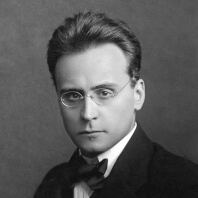Anton Webern
Compositeur
Pierre Boulez once referred semi-ironically to the three famous composers of the Second Viennese School as the Holy Trinity of Christian theology: in this constellation, Arnold Schoenberg would be the Father, Alban Berg the Son and Anton Webern the Holy Spirit of Modernism in music. The spiritual aspect can be recognised in Webern’s work in his intention to reduce the material aspects of music – sound and duration – to a minimum. The composer preferred gentle tones and wrote predominantly very short pieces. His music follows the rules of strict construction down to the smallest detail – at the same time, it is surrounded by a sense of mystery.
Webern was also a “holy spirit” in the sense of a role model for the avant-garde after the Second World War. Even more so than his teacher Schoenberg, he is considered a pioneer of serial music. He also had a great influence on Stravinsky and later composers such as György Kurtág, Sofia Gubaidulina and Unsuk Chin. The composer was born in Vienna in 1882, the son of a mining engineer, and learned to play the piano and cello as a child. In 1904, he became a pupil of Schoenberg, two years after beginning his studies in musicology in Vienna. He followed his teacher into atonality and free tonality – and, from the mid-1920s onwards, into twelve-tone music. Plagued by financial problems throughout his life, the musician was also a respected choir director, conductor and publisher. Shortly after the end of the Second World War, Webern, whose son-in-law was involved in the black market, was shot dead during a raid by American soldiers. In 1923, Webern appeared with the Berliner Philharmoniker as the conductor of his own Passacaglia, and the world premiere of two of Alban Berg’s Three Pieces for Orchestra. The Philharmoniker performed all of the composer’s orchestral works in a recording conducted by Pierre Boulez, which was released in 2000.